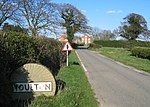No. 1 Flying Training School RAF
Aviation in YorkshireFlying training schools of the RAFHambleton DistrictHistory of North YorkshireMilitary history of North Yorkshire ... and 3 more
Military units and formations established in 1919Organisations based in North YorkshireUse British English from May 2017
The No. 1 Flying Training School (1 FTS) is the oldest military pilot training school in the world, currently used to deliver rotary training to aircrew of the British armed forces.
Excerpt from the Wikipedia article No. 1 Flying Training School RAF (License: CC BY-SA 3.0, Authors).No. 1 Flying Training School RAF
Grosvenor Square,
Geographical coordinates (GPS) Address Nearby Places Show on map
Geographical coordinates (GPS)
| Latitude | Longitude |
|---|---|
| N 54.046472222222 ° | E -1.24775 ° |
Address
Grosvenor Square
YO30 2TD , Linton-on-Ouse
England, United Kingdom
Open on Google Maps











